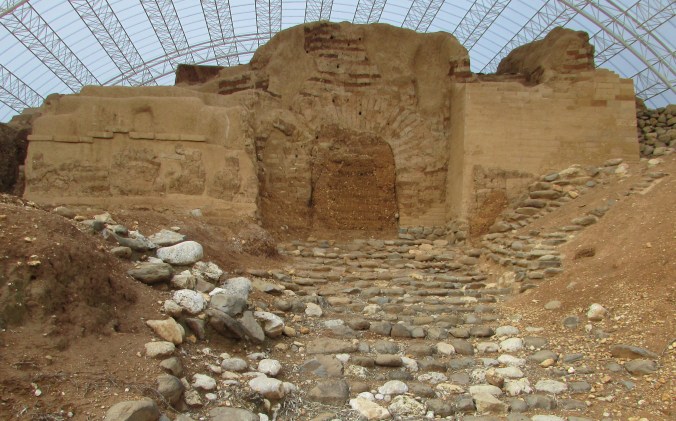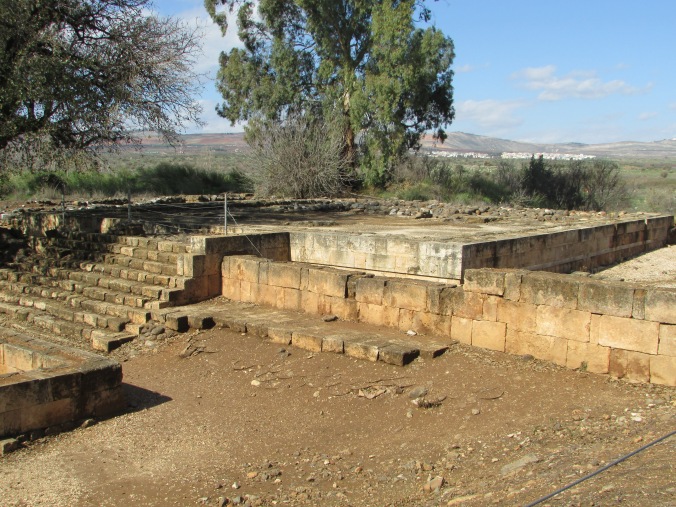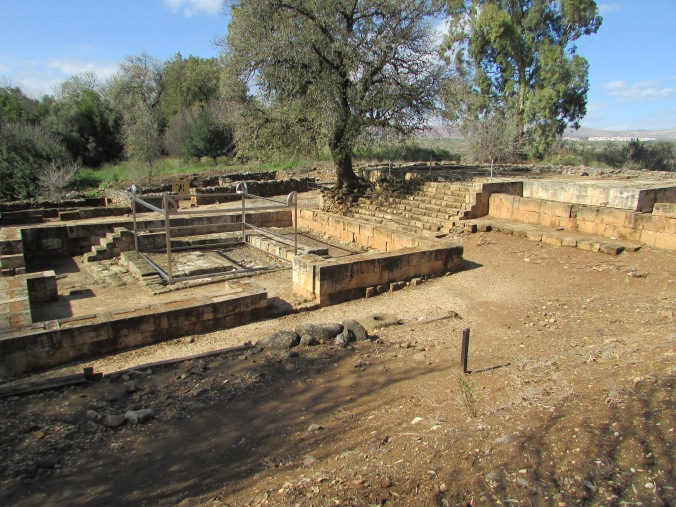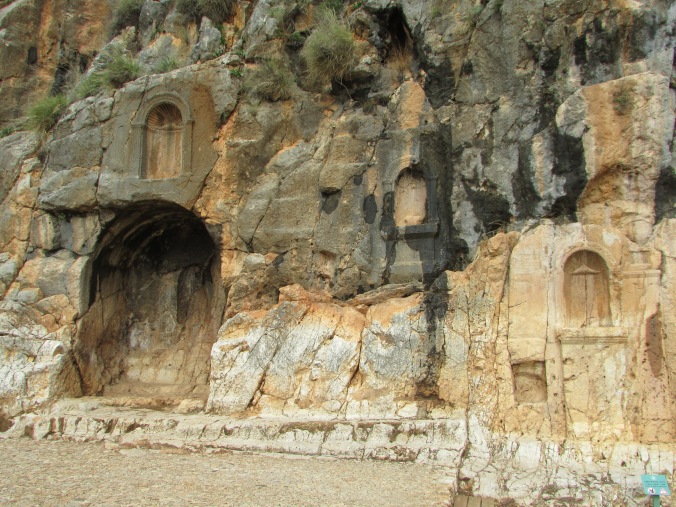Tel Dan National Park in northern Israel is both a lush nature reserve and a fascinating archeological site. Unlike most of Israel, water is abundant there. It flows from underground springs with amazing force forming one of the main tributaries of the Jordan River.

The area takes its name from the tribe of Dan who settled there during the 11th century BC after attacking the peaceful and unsuspecting people of the Canaanite city of Laish and burning it to the ground. (Judges 18) The Biblical history of this place goes all the way back to the book of Genesis! It was to here that Abraham and 318 trained men went in pursuit of those who had captured and carried off his nephew, Lot. (Genesis 14:11-16)
In 1979, the remains of a 7 metre tall gate constructed of sun-dried mud brick on a foundation of large basalt stones was unearthed. Now protected by an enormous canopy, it is the only one of its kind to have survived and is thought to date back to the days of Abraham, nearly 4000 years ago!

During several decades of excavation under the direction of Professor Avraham Biran of the Institute of Archaeology at Hebrew Union College in Jerusalem, many other significant remains dating back to kings Jeroboam, Ahab and Jeroboam II have been unearthed. Most impressive to me was the site constructed by Jeroboam to house one of the two golden calves that he set up as gods for his people as alternatives to going up to Jerusalem to worship. (1 Kings 12:26-30) I had often read of the “high places” where people of the Old Testament set up their idols, but I had always visualized them as hilltop shrines. In reality, Jeroboam’s high place was simply an elevated platform at the front of his place of worship. Archaeologists think that it was probably roofed.

Jeroboam’s high place

The metal frame in front of the high place indicates the size and shape of an altar that would have stood there.

Probably used for the ritual cleansing of animals before they were sacrificed on the altar.
Another extremely significant find at Tel Dan was the David stone. Inscriptions on the broken slab provided the first historical evidence of the Bible’s King David, proving that he was a genuine historical figure.
From Tel Dan, we moved on to Caesarea Philippi, a historic site of New Testament significance. It was here that the apostle Peter first identified Jesus as Messiah and Christ declared, “On this rock, I will build my church and the gates of Hades will not overcome it.” (Matthew 16:18) It’s often thought that he was referring to Peter as the rock, especially since the name Peter means “rock”, but Peter’s given name was actually Simon meaning “He (God) has heard”. Once we saw the site, another interpretation made complete sense.
In Jesus’ time, Caesarea Philippi was dedicated to the worship of Pan; god of hunting, of shepherds and flocks, and of the mountain wilds. He was depicted as having the upper body of a man and the hindquarters, legs and horns of a goat. Being a rustic god, Pan was not worshipped in temples, but in natural settings, usually caves or grottoes. Caesarea Philippi was a place steeped in debauchery. Spirits were thought to come and go from the underworld through a giant cave known as “The Gate of Hades”. Adjacent to the cave is a rocky escarpment with a series of niches hewn into it. Statues of Pan were placed in these recesses. Human sacrifices were made by tossing the victims into a sinkhole at the back of the cave. It was in front of this rock that Jesus stood when he made his statement. I believe that it was his intention to establish his church in worldly places, places steeped in idolatry and sin, and even the hideous practices of a place like Caesarea Philippi would not stop him! We, too, are called to take the light of our faith into the dark places of the world.

The Gate of Hades

I had never before heard the connection made between the cave and Jesus’ reference to the gates of Hades. The biblical contextualization makes His words all the more theologically resonant. Thanks for sharing your “enlightenment” with us!
I had never heard it before either, but it made perfect sense when we were standing there.